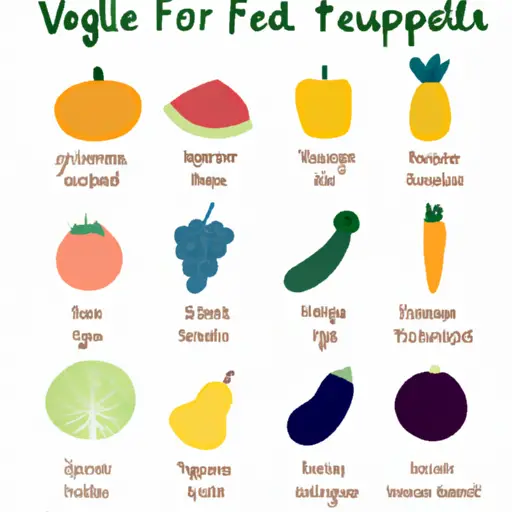A Guide to Different Types of Fruits and Vegetables
Fruits and vegetables are an essential part of a healthy diet. They are packed with vitamins, minerals, and fiber that our bodies need to function properly. Eating a variety of fruits and vegetables can also help reduce the risk of chronic diseases like heart disease, stroke, and certain types of cancer. With so many options available, it can sometimes be overwhelming to know which ones to choose. In this article, we will provide a guide to different types of fruits and vegetables to help you make informed choices for your diet.
Apples: Apples are one of the most common and widely consumed fruits worldwide. They come in various colors, such as red, green, or yellow, with each color having its own unique flavor profile. Apples are rich in antioxidants, dietary fiber, and vitamin C.
Bananas: Bananas are known for their high potassium content. They are also an excellent source of vitamin B6 and dietary fiber. Bananas come in different stages of ripeness – from green to yellow – each stage providing a slightly different taste.
Oranges: Oranges are famous for their high vitamin C content. They are also a good source of dietary fiber and antioxidants like flavonoids. Oranges have a refreshing citrus flavor that makes them an ideal snack or addition to salads.
Berries: Berries include strawberries, blueberries, raspberries, blackberries, and many more. These small fruits are packed with vitamins A and C as well as antioxidants. Berries have a sweet taste that can be enjoyed on their own or added to smoothies or desserts.
Grapes: Grapes come in various colors like red, green, or purple. They contain essential vitamins and minerals like vitamin K and potassium. Grapes can be eaten fresh or dried as raisins.
Watermelon: Watermelon is not only delicious but also hydrating due to its high water content. It is a great source of vitamins A and C. Watermelon is perfect for hot summer days and can be enjoyed chilled or used in salads or smoothies.

Pineapple: Pineapple is a tropical fruit known for its unique taste and high vitamin C content. It also contains an enzyme called bromelain, which aids digestion. Pineapple can be enjoyed on its own or used in sweet and savory dishes.
Carrots: Carrots are root vegetables that come in various colors – most commonly orange, but also purple, red, yellow, or white. They are an excellent source of beta carotene, vitamin K1, and fiber. Carrots can be eaten raw, cooked, or juiced.
Broccoli: Broccoli is a cruciferous vegetable that belongs to the same family as cauliflower and cabbage. It is packed with vitamins K and C as well as folate and fiber. Broccoli can be steamed, roasted, stir-fried, or added to soups and salads.
Spinach: Spinach is a leafy green vegetable with an impressive nutrient profile. It is rich in vitamins A and K1 as well as iron, calcium, and magnesium. Spinach can be enjoyed raw in salads or cooked into various dishes like pasta sauces or sautés.
Tomatoes: Despite technically being a fruit, tomatoes are commonly referred to as vegetables due to their culinary uses. They contain vitamins A and C as well as lycopene – an antioxidant associated with various health benefits. Tomatoes are versatile ingredients that can be used fresh in salads or cooked in sauces.
Avocado: Avocados are unique fruits known for their creamy texture and healthy monounsaturated fats. They are packed with vitamins C and E as well as potassium and fiber. Avocados can be enjoyed on toast, added to salads or smoothies, or used to make guacamole.
These are just a few examples of the wide variety of fruits and vegetables available. It is important to incorporate a diverse range of fruits and vegetables into your diet to ensure you get a broad spectrum of nutrients. Remember to choose organic options when possible to reduce exposure to pesticides. So next time you go grocery shopping, explore new fruits and vegetables, experiment with different recipes, and enjoy the multitude of health benefits they offer.













